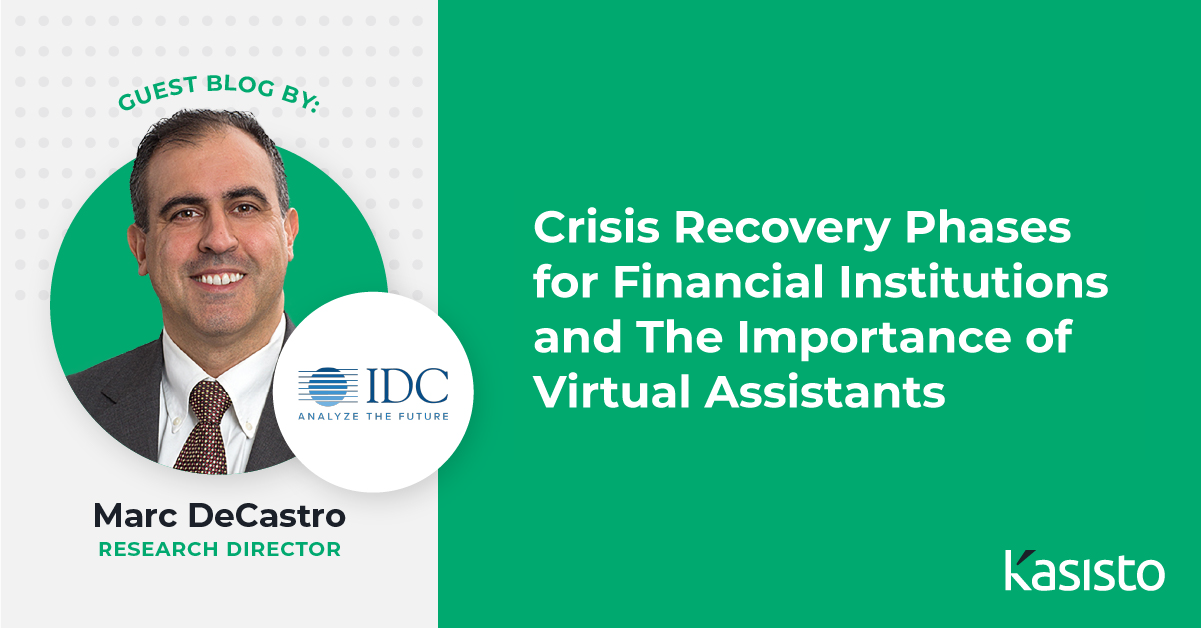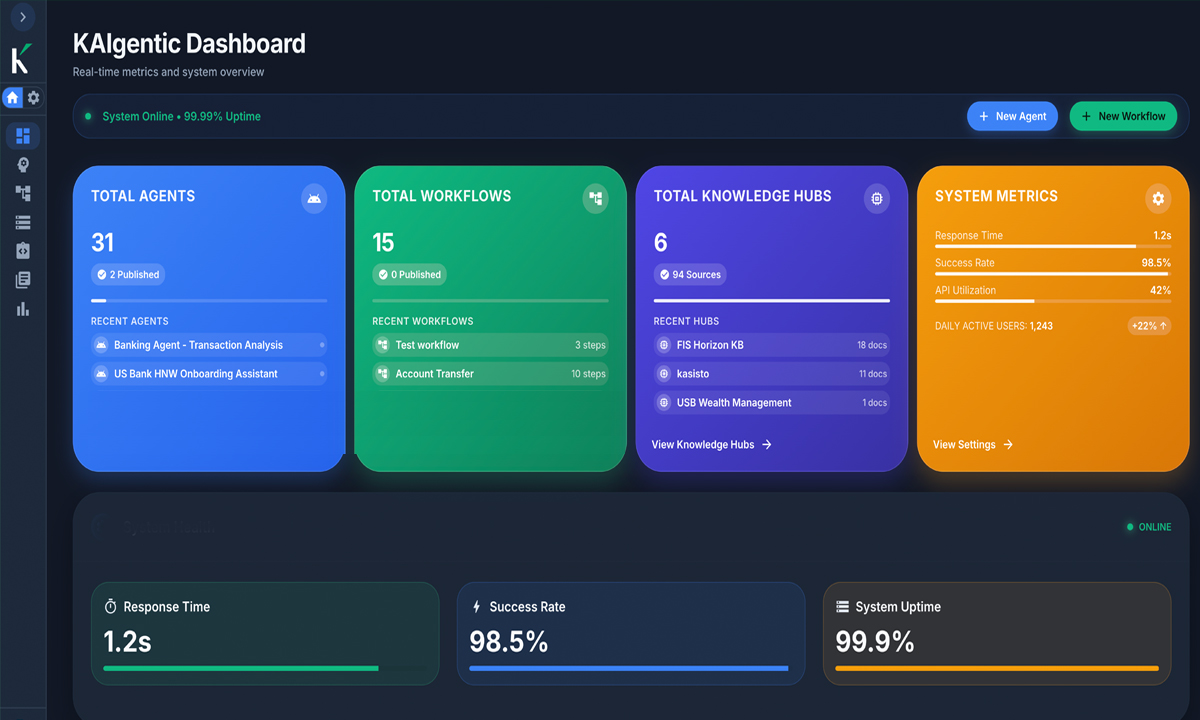The year 2020 will be remembered as a watershed moment for many things, some good and some not so good. To assist financial institutions with better understanding the phases of recovery, IDC has developed a guide that looks at each phase from the perspective of the organization and within the context of the economic conditions likely at play.
When the pandemic hit, the areas that were most impacted were those requiring interaction between the customer and a bank employee, primarily the branches, call centers, and non-automated chat bots. Customers were faced with extremely long wait times, closed branches, and unhelpful chat bot systems incapable capable of handling the types of questions being asked, creating dissatisfied and frustrating customer experiences.
Phase 1: Business Continuity
- Business Focus: Business Continuity Management and Disaster Recovery
- Economic Situation: Crisis
In phase 1, we are at the beginning of a crisis. Most recently the global pandemic put all institutions in this mode, and prior to that we can look back at the financial crisis of 2008. However, this first phase can also be a more regional or local crisis like a natural disaster or even social unrest.
The immediate reaction of the financial institution must be on overcoming the immediate and often paralyzing challenges to continue day-to-day operations, as well as keeping their employees safe while remaining a functional organization. During the lockdowns, this meant setting up employees remotely, closing branch networks, and complying with government mandates like the PPP program. During this phase, organizations without virtual assistants in production were left scrambling to assist both customers as well as their own employees.
Phase 2: ROI Focus
- Business Focus: Optimizing Costs with an ROI Focus
- Economic Situation: Economic Slow Down
In phase 2, the financial institution has emerged from the crisis and is now in the process of reprioritizing projects with an emphasis on including only those that provide efficiency and cost savings. Increasing revenue at this stage is not the objective, it is more about getting more efficient with current solutions in place or accelerating projects that are near completion that will provide tangible results.
When organizations are stuck with assessing projects simply by return, it often means that innovation might take a back seat. When thinking about ROI for virtual assistants, it is important to focus on not only the operational improvements, but also the ability for these assistants to provide value during times of uncertainty.
Phase 3: Business and Operational Resiliency
- Business Focus: Building a Resilient Organization
- Economic Situation: Recession
In phase 3, the economic impact of the crisis begins to unfold. Depending on length and severity of the crisis, this may include an increase in defaults and a subsequent need to ramp up collections, but it also provides financial institutions to look at ways to remain empathetic to build long term relationships.
This phase is often thought of as a glimpse into the new normal, as institutions can assess what went right and what went wrong in the first 2 phases and rebuild resiliency into their operations. Resilient organizations will rapidly realize the value of virtual assistants to move some of the workload away from more costly channels as well as provide extra layers of authentication when needed.
Phase 4: Investment Acceleration
- Business Focus: Targeted Investments
- Economic Situation: Returning to Growth
In phase 4, financial institutions can return to a strategic focus, with an eye towards longer-term transformational projects. At IDC, we have seen many examples of institutions in this phase that have implemented their digital transformation projects in record time – some condensing a multi-year project into a matter of months since they felt it was necessary to take advantage of the downturn and ramp up their technology.
Both employees and customers have been fully immersed in a digital-only world during the COVID-19 crisis, and have seen some of the benefits, but also some of the shortcomings of digital offerings. Acceleration of investments in virtual assistants could help customers with product recommendation as well as completing a complex transaction.
Phase 5: Innovation
- Business Focus: Future Enterprise
- Economic Situation: The Next Normal
Finally, in phase 5, financial institutions can go back to being innovative and disruptors as the markets have returned, the new normal is established, and the focus turns towards the future enterprise. Investments here are transformative, can afford to take more chances with emerging technology, and can again focus on providing customers with solutions that were unimaginable just months ago.
The path and length of time that it takes an institution to traverse the recovery cycle really depends on how far along they already were in their overall digital transformation strategy and investments. For example, while during the pandemic all institutions started at the first phase, some were able to move more quickly towards the latter phases simply because they had invested in digital solutions prior to the shutdowns. This “digital divide” will likely become something that will separate institutions from those who are thriving compared to those who are just surviving. Innovative banks will have virtual assistants weaved into future solutions for both customers and employees as our voices begin to phase out our keyboards.


